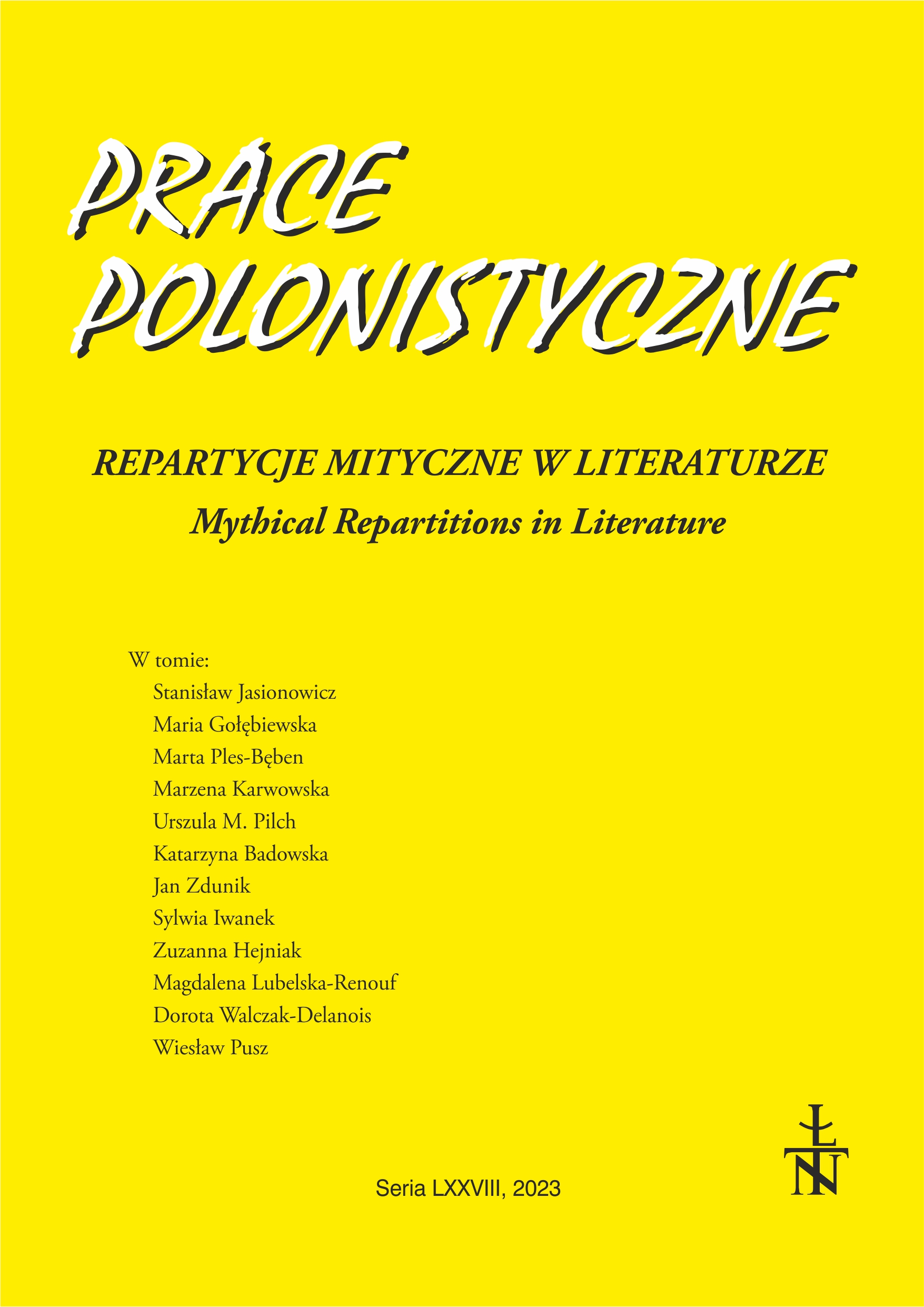REINTERPRETACJA MITYCZNEJ FIGURY ATLASA W ANTROPOLOGII GASTONA BACHELARDA
A REINTERPRETATION OF THE MYTHICAL FIGURE OF ATLAS IN GASTON BACHELARD’S ANTHROPOLOGY
Author(s): Marzena KarwowskaSubject(s): French Literature, Sociology of Literature
Published by: Łódzkie Towarzystwo Naukowe
Keywords: Gaston Bachelard; the mythical figure of Atlas; myth-criticism; myth; symbol; anthropological structures of the imaginary;
Summary/Abstract: Gaston Bachelard (1884–1962), a French anthropologist of the imagination, seems to be somewhat forgotten and significantly underresearched in Polish literary studies, even though his major works on poetic imagination – La Psychanalyse du feu (1938), L’Eau et les rêves (1942), L’Air et les songes (1943), La Terre et les rêveries de la volonté (1947), La Terre et les rêveries du repos (1948), La Poétique de l’espace (1957), La Poétique de la rêverie (1960), and La Flamme d’une chandelle (1961) – have exerted a major impact on the perception of the literary text. Not only did Bachelard propose a new poetics (the poetics of the elements), but he also redefined the category of the author and introduced the following concepts to the humanities: the Dreaming Cogito (or the Dreamer’s Cogito), which describes a creative subjectivity, and dreamy consciousness (Fr. conscience rêveuse), or, in other words, poetic imagination. Bachelard’s poetics of the elements is founded upon his notion of symbols-images, which include principal images (Fr. imago princeps), imaginative compounds that organize the Dreamer’s Cogito.The article discusses the theoretical concepts that Bachelard explains in his monograph ontheEarthelement,entitledLaTerreetlesrêveriesdelavolonté.Essaissurlesimaginationdela matière (Corti, Paris 1947). Karwowska focuses on the reinterpretation of the mythical figure of Atlas. It is examined in the context of the imaginary relationship between anthropos and kosmos, which serves as the thematic core of Bachelard’s anthropology. Following Bachelard, Karwowska interprets the mythical Atlas as an archetypal image that can be expressed on the level of langage. What serves as its main feature is redundancy which remains open to various interpretative contexts. Bachelard’s work on myth in literary studies was most fully developed by myth-criticism. Scholars who research this field, similarly to Bachelard, investigate the human mundus imaginalis. They look for semantic basins (imaginary chreods), formed around a common meaning, the dominant myth. The article attempts to reconstruct the images generated by the Dreamer’s Cogito, which are the imagination’s response to the human encounter with material nature. It examines the mythical figure of Atlas against the wide spectrum of Bachelard’s figures of the imagination (the Antaeus complex, the Pluto-Proserpine complex, the mythical figure of Vulcan, the muscular anthropos, crystal imagination). Bachelard thoroughly investigates how humans use their imagination to colonize nature, studies the mechanisms of imagination that function on the level of the relationship between anthropos and kosmos, and finds universal anthropological antagonistic strategies of fight and domination in the human relationship with matter.
Journal: Prace Polonistyczne
- Issue Year: 2023
- Issue No: 78
- Page Range: 63-76
- Page Count: 14
- Language: Polish

